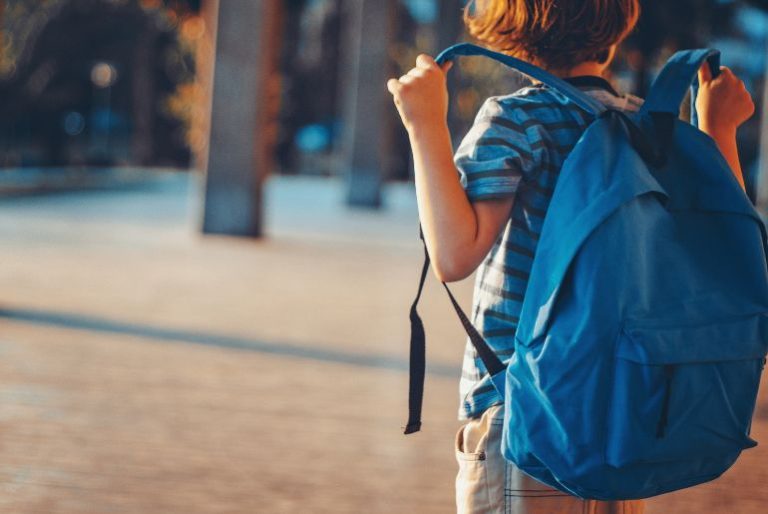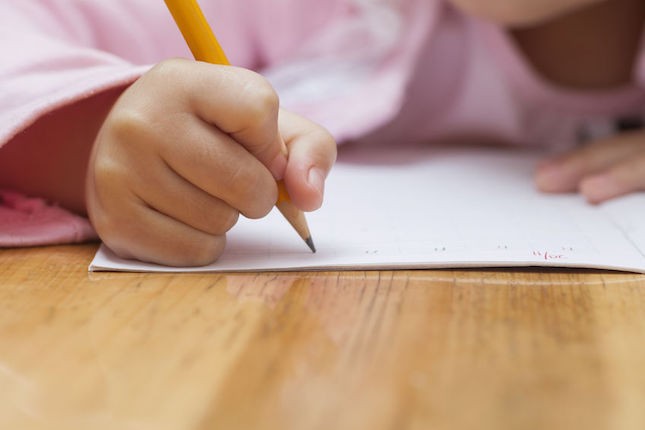Biking to school can be a great way for kids to get exercise, develop confidence and learn to share the road safely with other cyclists and motorists. But before encouraging your child to get on their bike bike, there are a few things to consider:
The bike
Before getting your child a bike, ensure that it is the right size and fit.
- When sitting on the seat with hands on the handlebar, your child must be able to place the balls of both feet on the ground.
- Straddling the centre bar, your child should be able to comfortably stand with two feet flat on the ground.
- Make sure your child can comfortably grasp the hand brakes and apply enough pressure to stop the bike.
The helmet
Before your child sets off on their bike, ensure the helmet is in good condition and not cracked or damaged. Make sure it’s the right size, with little or no wobble when fitted.
Keep safe
Ensure your child has the right cycling skills to get to school safely on a bike. Ride with your child until you’re sure they can manage the traffic and always ride with them if they’re under 10.
- Teach them balance, turning and signalling skills away from traffic, then take them riding on quiet streets to improve their traffic awareness.
- Keep an eye out. If one adult is cycling with young children, riding at the back is best. If there is more than one adult, have one at the front and one at the back.
- Point out any potential hazards to them and help them choose good places to ride.
- Teach them to ride in a straight line, at least one metre from parked cars, and use cycle lanes when they can.
- Show them to watch out for car doors opening, potholes, rubbish, grates, pedestrians and other hazards.
- Have your child wear bright or high visibility clothing or a high-vis backpack cover and have front and rear lights – we suggest alternative arrangements for kids getting to and from school if the weather’s not so flash.
Know the road rules
Before cycling on the road, your child must know the road rules.
- Cycle helmets must be worn, need to meet an approved standard and be securely fastened.
- Bikes must have brakes and reflectors.
- Front and rear lights need to be on if it’s dim or dark.
Teach your child about traffic lights and signs, how to keep left, use hand signals, obey the give way rules, and safely approach railway crossings, roundabouts, intersections, descents, one lane bridges and loose gravel roads.
Plan the route
Map out a safe route to school from home. Choose a way through side streets, with other kids on bikes, low traffic speeds and good visibility. Ride with your child and make sure they understand the route – have them lead to show you they know where they’re going.
Sharing the road
It’s important to ride with courtesy and respect for all other cyclists and motorists. Ensure your child knows to be visible at all times, clearly show their intentions and thank other road users when you can. For example, let motorists or other cyclists know you’re happy they’ve waited for you by waving, smiling, or giving them a ‘thumbs up’. This will make sharing the road easier for everyone.
Try not to hold up the flow of traffic. If necessary, pull over to allow vehicles to pass.
Backpacks and gear
Be sure not to overload your child with gear to carry on their bike. A light backpack is fine, or even better, kit out your child’s bike with a pannier and let the bike carry the load.
Don’t hang anything from the handlebars – it could throw them off balance or get stuck in the wheels and cause a crash.
Keep healthy
Did you know 10% of all Kiwi children between two and 14 years-old are overweight, according to the Ministry of Health. Get your children into fun, healthy habits, like cycling, that last a lifetime.
Kids who are active will:
- Have stronger muscles and bones
- Have a leaner body because exercise helps control body fat
- Be less likely to become overweight
- Decrease the risk of developing type 2 diabetes
So while the sun is shining and the weather is warm, get out on your bike! It’s a great way to get around the place.
More information
You can find more information about biking safely to school on the Bike Wise website.





